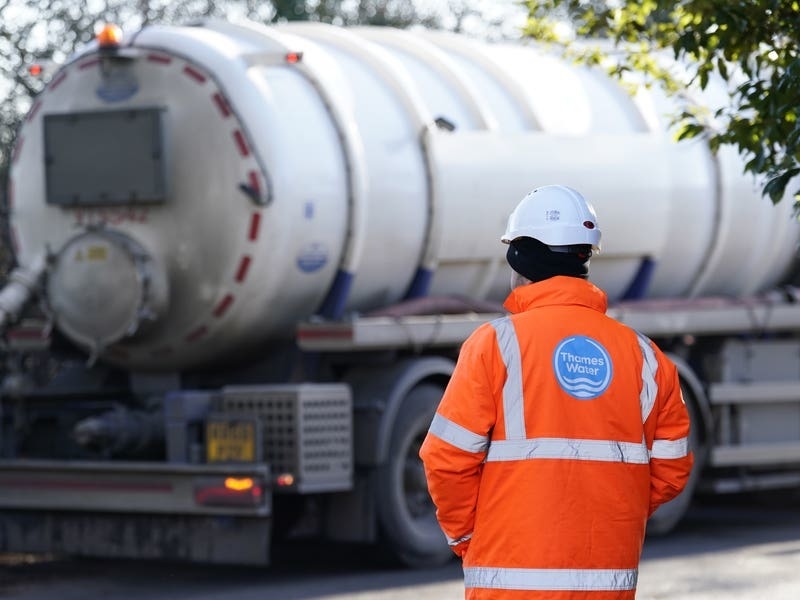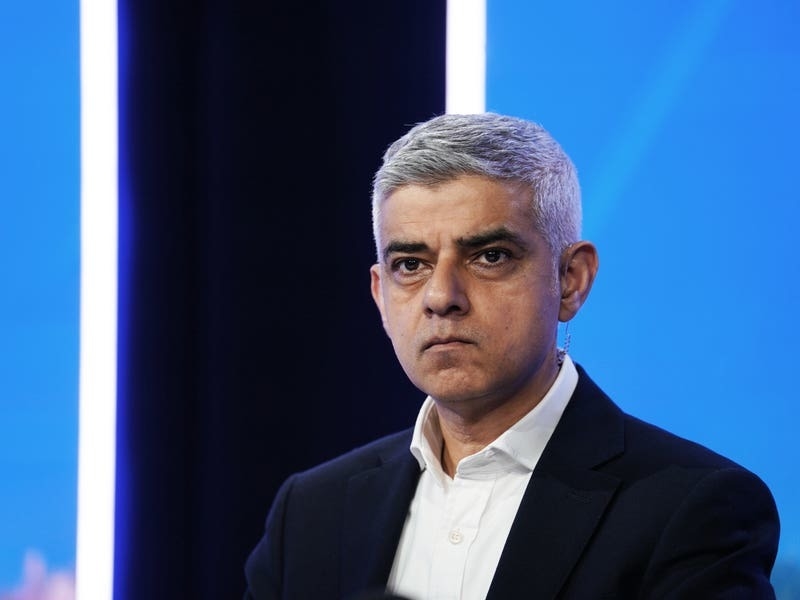Thames Water has put forward new business plans to the industry regulator as it races to secure funding and stave off the threat of nationalisation.
Its latest plan has seen it warn of 44% hikes in customer bills in the five years to 2030 as the firm pledges more in investment in an attempt to ease Ofwat’s concerns.
But this comes as it battles to secure the backing of its investors, who withdrew a £500 million funding lifeline that was due last month.
Here we look at what is behind the latest bill hike warnings and funding crisis at the utility giant:
The group – which serves 16 million households across London and the South East – has proposed increasing spending by £1.1 billion to £19.8 billion for the five years to 2030, with the extra being used for environmental projects.
But it also revealed aims for another potential £1.9 billion investment as part of its updated business plan, depending on the availability of labour in its supply chain.
If Ofwat was to give the full plans the go-ahead, this would see customer bills rise to £627 a year by 2030.
– Why has Thames Water submitted a new business plan?
It was forced to go back to the drawing board after Ofwat reportedly dismissed its original plan, which would have seen it raise customer bills by 40% to fund an investment programme worth £18.7 billion.
This then prompted investors in its parent company Kemble to pull crucial investment.
– Why is Thames Water racing to secure cash, less than a year after agreeing a funding plan with investors?
The water utility revealed late last month that its investors had pulled a £500 million funding lifeline that was due to be paid at the end of this month.
The payment was the first part of a £750 million financing plan that was agreed by its investors last July, when the debt-laden firm was first said to have been on the brink of emergency nationalisation.
It is understood that investors pulled the agreed funding after Ofwat refused to bow to the water giant’s demands for a 40% bill hike for customers, an easing of capital spending requirements as well as leniency on penalties for failing to meet targets.
But Ofwat said Thames Water must now look elsewhere for the funding.
– What is behind the firm’s financial troubles?
Thames Water has racked up debts of almost £15 billion over the past 16 years, while also paying out billions of pounds worth of dividends to investors.
It has been owned since 2017 by a consortium including the Universities Superannuation Scheme (USS), China’s sovereign wealth fund, a Canadian pension fund and the BT Pension Scheme.
Before that, it was owned by a consortium led by Australian financial services group Macquarie for about a decade, during which time it ran up debts of around £10 billion.
Our largest improvement project to date is the London Tideway improvements scheme.
The final part of the scheme is the Thames Tideway Tunnel, a £4.5-billion project being delivered by @TidewayLondonhttps://t.co/JOH1Pf5itN pic.twitter.com/ihGDDCAD0b
— Thames Water ? (@thameswater) March 26, 2024
As well as struggling under a mounting debt pile, it is also facing calls for massive investment into its services and infrastructure.
This is to address poor performance targets on sewage pollution, leaks and to update old pipes and systems.
Despite the troubles, Thames Water revealed in December that it paid a £37.5 million dividend to a parent company.
When asked by Ofwat to explain the move, Thames said the money had been moved to help pay its debts.
In the year to the end of March 2023, it paid out about £45 million in dividends, and the previous two years it handed out a combined £53.9 million.
But the firm has stressed that it has not paid a dividend to “external shareholders” for at least the past five years.
– Is Thames Water heading for emergency nationalisation?
Reports suggest the Government is working on plans to effectively nationalise the water giant.
It is said that a blueprint codenamed Project Timber is being drawn up in Whitehall, given concerns over the firm’s finances, although the Government and Ofwat remain optimistic this will not happen.
The firm has £2.4 billion of cash currently available to it, which should see it meet funding needs for the next 15 months, during which time it will look to secure the financing needed.
– Why has the Government not stepped in already to take back control of Thames Water?
There have been growing calls for the Government to step in and nationalise Thames Water, in light of its funding issues and its poor financial and environmental performance.
But this would mean the taxpayer ultimately picking up the bill for its failures and there are no guarantees that customers would still not be looking at hefty bill hikes.

Both Ofwat and Thames Water have sought to reassure customers that services would not be affected by the funding woes.
Bosses at Thames said last month was “business as usual”, while Ofwat insisted that “safeguards” were in place to protect services.
However, there are worries over a £190 million loan due for refinancing by Thames Water’s parent firm Kemble at the end of this month – a debt that the group has already warned it will not be able to repay.
Thames Water is ring-fenced from Kemble, though there are still concerns over the impact of missing the refinancing deadline.
– What happens next for Thames?
It is understood the firm’s latest business plan will be discussed by Ofwat at a critical meeting on May 23, with a initial decision on what it and the rest of the sector will be allowed to charge customers being made on June 12.






